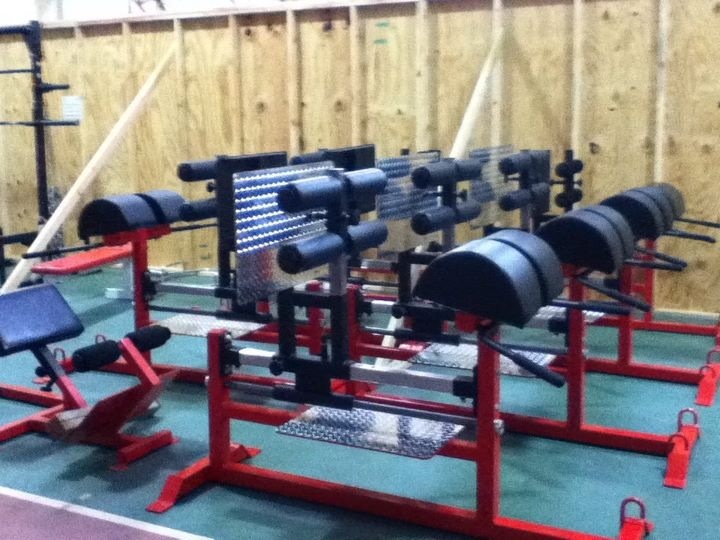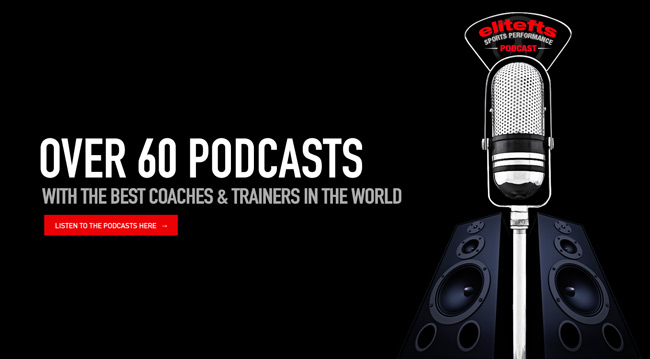
A few years back, I got a chance to sit down and talk shop with Mike Cracus who, at the time, was the Head Strength & Conditioning Coach, Associate Head Women's Soccer Coach, and Facilities Director at Oberlin College. Just by the number of titles he had and the similarities between Oberlin College and Dension University, we had a lot in common. Mike is now the Head Women's Soccer Coach at Hiram College.
At Oberlin, he had his work cut out for him. Not anything against schools like Oberlin, but the culture and set-up is not very conducive for sports performance. You can get things rolling in the right direction, but like I learned, it will take some time. There were a lot of parallels between our positions and it was great sharing ideas. I talked about some of these same ideas in the article: The Sad State of DIII Strength & Conditioning.
So, our conversation helped my bullet-point some ideas for the small college weight room and I thought about two questions.
What are the biggest challenges?
What did I do to help the situation?
These are issues that are unique to the small college setting.
2 of the Biggest Challenges of the Small College Strength & Conditioning Setting
1. Sharing the weightroom with NARPS*.
If you happen to have a facility that is for athletics or at least PE and athletics, then you are in as good of a situation as you can ask for. This seems like an absurd idea for DI schools, but this is fairly common for small schools. This becomes a scheduling nightmare and no one wins. You see either situation on a regular basis:
- Teams have to wait for one douche-bag to finish his 40 sets of quarter-squats with a bar-pad on his back.
- A regular student who enjoys training but the entire team of Lax-Bros show up post-practice smelling like they were marinated in BO. No one is happy in either situation.
*Non-Athletic Regular Person
2. Not Seeing your Athletes from May until August.
There are some students that stay on campus and some urban schools have an advantage in this sense. But, Most schools send their athletes home with an outdated, oversimplified training manual that may or may not be followed. Even at the high school level, the players can train all summer and are even allotted non-equipment practices in some states.
This always puts strength coaches in a dilemma and requires some kind of conditioning and performance tests so coaches can "see if they did anything this summer". Well, if you had any doubts, that is not a good sign. Most big schools do their performance testing a week or two before report day because their athletes were there all summer.
This can also hurt with conditioning. For smaller schools, fall camp is needed to prepare their team physically. Most small school coaches assume the worst and ensure that conditioning levels are high. This process skips a fundamental element about why people don't get the whole idea of conditioning. Summer conditioning is not designed to get an athlete ready for their season. It's designed to get them ready for camp.
This was such a frustrating topic for a lot of coaches I talked to that I decided to write Football Coaches: Why are you Testing During Fall Camp? Check it out and tell me if I'm way off-base.
5 Falsehoods that Inhibit the Training for Athletes in the Small school Setting
1. Speed sessions and lifting session cant be separated.
This is especially untrue if you do not have adequate track, court, or field space near your weightroom. By having a "running" session at different time than the lift has a few advantageous. First, you can schedule these speed session outside the normal grid with multiple teams. This will ensure the coach isn't out of the weightroom during the peak hours. Which brings me to my next point...
Additional Reading: 5 Strategies to Perform More Work in Less Time
2. Every team must lift as a team.
The off-season is the time to be selfish for athletes and finding a time where every team will be available to lift as a team is ridiculous if you have a small or shared facility. Remember, every team will have a similar academic schedule and all of them want to train at the same time. Not going to happen. This is especially hard to sell to the coaching during this season (if you are lucky enough that they decide to lift during the season). Coaches often want their teams to lift after practice because either they "don't want them tired for practice" or "they don't want to have their athletes come to the facility twice." Either was is sub-optimal. This is the classic case of a coach checking boxes and just having their team lift just to say they do. Strength coaches need to continue to educate sport coaches. some just may not know. I would suggest giving the a hierarchy:
- Best Option: Lift at a separated time from practice like the morning. This way they will get a few meals in before practice.
- Next Best. Lift before practice. Incorporate explosive and heavy/ low-volume movements and cap this total time assigned. Be Efficient.
- Worst Option: Lift after practice. This usually always means the coach is somewhat lazy or soft. Or just uneducated about physiology. There are so many things sub-optimal about this, If you are stuck training a team after practice then make the best of it.
Additional Reading: WATCH: A Better Way to Train High School Athletes
3. My teams can't get strong training 2-days per week.
This is B.S. as most of you already know. There are some sport coaches that don't believe this, but that is part of the education process that strength coaches as destined to engage in. The fact is a 2-day plan works and if you add a third speed and agility session, this plan become fairly comprehensive. Look, I realize that a 3 or 4 day plan is more optimal, but I just did the math. Let's say you have 500 student athletes and your weight room holds about 25 at a time (not that unrealistic). Now, if every team is lifting 2x per week, that is 1000 session. One thousand divided by 25 is 40. That means you will need 4 sessions per week. So 8 hours a day of training is reasonable (unless you are coaching a sport). That's IF you can evenly distribute 500 athletes throughout the week. Add a 3rd session for every athlete and you can see how mismanaged this can get. Here is a simple 3 day split.
Day 1:
Snatch, Push Press, Squat, GHR, Row
Day 2:
Clean, RDL, Bench, Chin, Lunge
Add an extra speed and agility session, some rotational power, plyos, and short sprints on day 1 or 2 and you have a solid plan.
Additional Reading: WATCH: A Better Way to Train High School Athletes
Additional Reading: 5 Strategies to Perform More Work in Less Time
4. You don't need to prioritize sports.
Remember, you are the head coach of the weightroom as Joe Kenn says. You have an obligation to have the university athletic departments first interest in mind. So scheduling can become downright catty. Also remember, every coach has their own agenda and not all have their athletes' best interest in mind. In order to prioritize sports, I needed a system, and I needs parameters for that system.
Priority Teams
1.In-Season
2.Pre-Season (non-traditional)
3.Off-Season
4.Post-Season
So for Division 3, here's how they would match up.
Fall Sports: Football, Field Hockey, Volleyball, M&W Soccer
Winter Sports: M&W Basketball, M&W Track&Field, M&W Swim & Dive, Wrestling
Spring Sports: Baseball, Softball M&W Track & Field, M&W Lacrosse, M&W Tennis
1st Semester, 1st Qtr (September - October) - 7wks
In-Season: Fall
Non-Traditional-Season: Spring
Off-Season: Winter
Post-Season: None
1st Semester, 2nd Qtr (October - December) - 7wks
In-Season: Fall & Winter
Pre-Season: Winter
Off-Season: Spring
Post-Season: Fall
2nd Semester, 1st Qtr (January - March) - 8wks
In-Season: Winter
Pre-Season: Spring
Off-Season: Fall
Post-Season: None
2nd Semester, 2nd Qtr (March - May) - 6wks
In-Season: Spring
Non-Traditional Season: Fall
Off-Season: None
Post-Season: Winter
5. Every team must have an individualized program.
I realize there are a lot of coaches that will preach that every program has to match the specific needs of each athlete. My contention is this: Is there any athlete playing any position of any sport that wouldn't benefit from squatting, sprinting, jumping, pulling, pressing, rowing, etc.? Having a general template is not to be confused with a cookie cutter program. Standardizing templates can cure some logistical headaches. Especially when you have some mixed groups of athletes from various teams, which so often happens.
Articles by Mark Watts
Olympic Lifting for Athletes: Using Static Holds to Improve Technique
Head Games: Training the Neck to Reduce Concussions
The Fastest Sport on Ice: Things You Don't Know About Bobsled
Tips to Crush the Combine Tests
An In-Season Training Guide for Baseball Pitchers
Individual Training in a Team Setting
Off-Season Training for Football (with 8-Week Program)
What is Really Wrong with Strength and Conditioning
The Last Sports Performance Podcast
Olympic Lifting for Athletic Performance
Sports Performance Coach Education Series
WATCH: How to Find a Strength and Conditioning Job
WATCH: Becoming a Mentor to Young Coaches
WATCH: The Four-Step Coaching Process
WATCH: 5 Strategies to Perform More Work in Less Time
WATCH: Why Communication is Key to a Better Coaching Career
WATCH: A Better Way to Train High School Athletes
WATCH: How to Implement Auto-Regulatory Training in a Team Setting
WATCH: Pre-Workout Circuits to Optimize Training Time and Maximize Performance
WATCH: Hypertrophy Circuits for Athletes in a Team Setting
Coaches Clinics
WATCH: Two Bench Press Mechanical Drop-Sets for Hypertrophy
WATCH: Two Lateral Speed Drills with Bands to Improve Change of Direction
WATCH: Adjusting the Glute-Ham Raise to Optimize Your Training
WATCH: Basic Linear Speed Acceleration Drills in a Team Setting
WATCH: Kettlebell Training for Team Sports















1 Comment